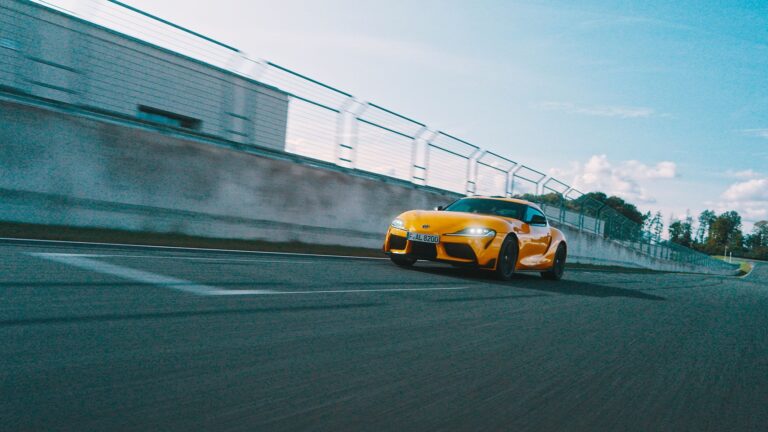The new Azenis RS820 tire is Falken’s first ultra-ultra-high-performance (UUHP) product for road and track applications in Europe. The tire’s new pattern has been designed to offer responsive handling, balanced wet and dry grip and impressive feel on road and track, the tire maker says.
The tire is available in 38 sizes from 19in to 21in, with cross-sections from 30 to 45, and a Y speed index – rated up to 300km/h.
Designed to suit a range of high-performance cars and SUVs – such the Porsche 911, Audi R8, Aston Martin Vantage, BMW M5, Cupra Formentor and Mercedes-Benz AMG GT – Falken Europe’s engineers, working with parent company SRI in Japan, focused on developing a tire that would offer maximum driving pleasure, safety and more durability.
The Azenis RS820 features an asymmetric tread pattern with four circumferential tread grooves. An improved shoulder design offers increased contact with the road and enhanced lateral stability on dry roads.
The tread compound comprises a variety of chemical compounds to ensure ruggedness in the tread blocks, while a combination of interlocking microstructures and flexibility provides driving properties across a broad range of road surfaces and conditions.
The circumferential tread ribs are designed to improve lateral grip while cornering, as well as ensure stable straight-line stability. Wide, deep grooves target good water drainage and minimize the risk of aquaplaning.
With weight also an important factor when it comes to high-performance vehicles, Falken’s engineers explored all weight-saving possibilities – both in construction and compound – to make the Azenis RS820 lighter than its comparable internal reference product.
Falken used SRI’s proprietary advanced 4D Nano design technology, which simulates and controls the molecular structure of rubber compounds at nano level to create compounds with lower wear rates and offer a longer lifespan. The label values for the Azenis RS820 – which have not yet been fully defined – are provisionally classified as A (performance in wet conditions), B (noise) and C (fuel economy).
The majority (30) out of the 38 sizes are set to go into production before the end of 2023, with the remaining eight to follow in 2024.



